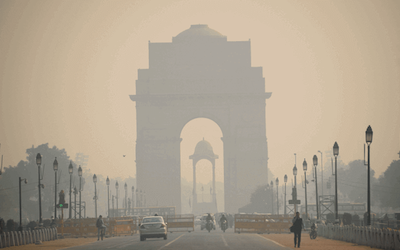AUTOMOTIVE AIR POLLUTION
 It is estimated that more than 30% of the air pollution in our cities is caused by vehicular traffic, and a significant amount, maybe 5% to 10% is the result of diesel generators.
It is estimated that more than 30% of the air pollution in our cities is caused by vehicular traffic, and a significant amount, maybe 5% to 10% is the result of diesel generators.
India is the world’s fourth most significant greenhouse gas (GHG) emitter, contributing more than 7% of all global emissions. It ranks third amongst countries with the world’s worst air quality, and 13 of its North Indian cities are among 15 of the world’s most polluted. A substantial contributor to this situation is transportation. In fact trasportation is the fastest-growing source of carbon emissions in the country.
Surely, it’s time we did something about this life-threatening situation.
…. continued….
Vehicular emissions can be categorised according to whether they are direct ‘tailpipe’ emissions – formed by fuel combustion in conventional, hydrocarbon fuelled vehicles, or whether they are indirect by-products of gaseous reactions in the atmosphere.
The main constituents of exhaust emissions are:
- Carbon dioxide (CO2) is one of the primary constituents of a vehicle’s tailpipe emissions. An end product of any fuel combustion process, today, motor vehicles are estimated to contribute nearly 24 per cent of the world’s direct CO2 While these may not pose any immediate health hazards, their increasing build-up catalyses global warming, furthering climate change.
- Carbon monoxide (CO) is a highly toxic, colourless, odourless gas that arises from the incomplete combustion of fossil fuels. This is highly detrimental to health as it affects the body’s ability to absorb oxygen. Studies have found that in highly polluted cities like New Delhi, vehicular emissions are the primary source of CO, which, incidentally, fell by nearly 86 per cent during the Covid-19 lockdown due to restrictions on vehicular movement.
- Nitrous oxide (NOx) arises from the high-temperature combustion of fossil fuels and further contributes to ozone generation. Indian cities like New Delhi, Bangalore, Mumbai, and Kolkata have some of the highest levels of NOx in the country, linked exclusively to vehicular pollution. An excess amount of NOx gives rise to ground-level ozone. Although not directly emitted from transport, this deadly secondary gas has a high correlation with asthma and other respiratory diseases.
- Particulate matter (PM) is not a single pollutant, but rather, a complex mixture of solids and aerosols, composed of small droplets of liquid, dry solid fragments, and solid cores with liquid coatings. Particles are defined by their diameter for air quality regulatory purposes. Those with a diameter of 10 microns or less (PM10), including those with a diameter of 2.5 microns or less (PM2.5) are inhalable into the lungs and contribute directly to adverse health effects.
Research has shown that older adults with chronic heart or lung disease and asthmatics are the most likely groups to experience adverse health effects with exposure to PM10 and PM2.5. Even more alarming, children and infants are susceptible to harm from inhaling such pollutants. They breathe faster, spend more time outdoors and have smaller body sizes, and therefore inhale more air per kilogram of body weight than do adults. In addition, because children’s immune system is still immature, they are more susceptible to PM than healthy adults.
Air pollution is now the major source of premature deaths of children in India. It is ranked higher than malnutrition of the Mother and the Child, and is responsible for more than 6.0 million deaths each year.
